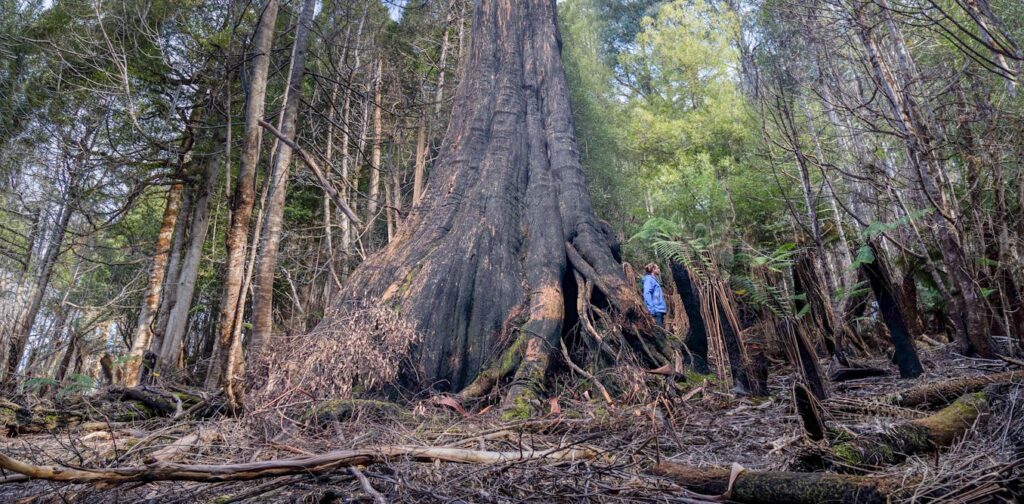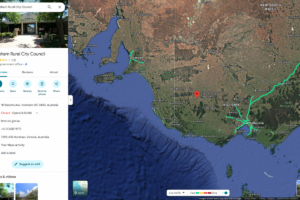
Tasmania’s mountain ash, known scientifically as Eucalyptus regnans, stands as the world’s tallest flowering plant, reaching heights of up to 100 meters and living for over 600 years. These towering giants play a pivotal role in their ecosystems, offering habitat and contributing to the health of the natural world. However, their numbers are dwindling due to logging, land degradation, fire, and climate change.
This alarming trend highlights a broader issue: the persistent undervaluation of plants by humans, despite the vast amount they can teach us. At the forefront of this learning is the Deep Design Lab, where experts design and build wildlife homes inspired by nature’s solutions. Among their innovations are 3D-printed nest boxes for owls and other species, compensating for the loss of natural tree hollows. Their research into Tasmania’s ancient eucalypts reveals five ingenious lessons that urban planners, designers, and the public can learn from trees.
Dead Trees and Fallen Branches: A Habitat Haven
Often, dead trees are removed due to concerns they might fall and cause harm. Similarly, fallen logs and branches are frequently cleared for tidiness. However, dead trees are crucial habitats for wildlife. Microbes, insects, lizards, birds, and mammals often prefer dead trees due to their digestibility and ease of access.
Exposure to diverse ecosystems, including those supported by dead trees, also benefits human health and wellbeing. Thus, it’s advantageous to retain dead trees and incorporate them safely into design plans, whether standing or fallen.
Old Trees: Guardians of Biodiversity
Mature trees possess unique features absent in younger counterparts, such as hollows, cracks, peeling bark, and abundant fruit, nectar, and seeds. Their canopies often include horizontal and dead branches favored by birds.
More than 300 species of Australian native mammals, birds, reptiles, and amphibians rely on tree hollows, which take centuries to form. Countless insects and microbes also thrive within these hollows. Designers and land managers should prioritize the preservation of old trees, integrating them into planning processes. Homeowners, too, should recognize their ecological contributions, fostering urban environments that are lush and green rather than barren.
Roots: The Hidden Network
Trees extract water and nutrients through their roots, which adapt to maximize uptake when water is scarce. The surrounding environment supports beneficial microorganisms and inhibits harmful ones, regulating the growth of nearby plants.
Unfortunately, urban design often traps roots under impermeable surfaces like concrete. Instead, creating permeable surfaces with soil, gravel, or perforated pavers can promote healthy root growth, enhancing urban biodiversity and resilience.
Bark Streamers: Microhabitats in the Making
Bark streamers, or strips of peeling bark, create microhabitats for insects such as flightless tree crickets. Despite their ecological importance, bark streamers are often overlooked and require further research.
Understanding their value could inform urban tree maintenance, balancing ecological benefits with safety concerns. The Deep Design Lab is exploring how to incorporate bark streamers into artificial features, potentially enhancing the ecological value of urban structures.
Litter: Nature’s Blanket
Fallen leaves, seeds, twigs, and branches enrich soil, retain moisture, and provide habitat for various organisms. Yet, in urban areas, this organic litter is often removed, disrupting ecological interactions and depriving trees of nutrients.
Designers and the public should seek ways to retain organic litter through socially appealing strategies, such as creating designated wild zones or modifying maintenance practices to balance ecological benefits with public expectations.
Plants as Designers: A New Perspective
Humans often value intelligence that mirrors their own cognitive processes, overlooking other forms of problem-solving and innovation. Trees, through their ability to construct supportive habitats, offer a different kind of intelligence that merits further exploration.
The Deep Design Lab employs technology like laser scanning and computer modeling to study trees and their functions, aiming to replicate natural patterns in human designs. By learning from these natural designs, humans can create more sustainable and resilient environments.
With gratitude to Julian Rutten and Alexander Holland of the Deep Design Lab, who co-authored the original research and contributed to this article.







